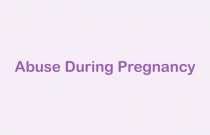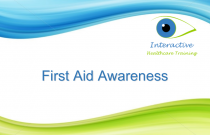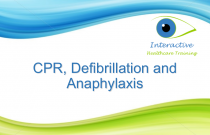Alzheimer's Disease
Industry Specialists
3.00 Hours
Given information, guidelines, and specific nursing responses for cognitively impaired people, the Health care provider will be able to assist family members and provide professional nursing care to residents with Alzheimer’s disease.
Overview of Parental Alienation and Parental Alienation Syndrome
Joan Meier; National Resource Center on Domestic Violence
1.00 Hours
While parental alienation syndrome (PAS) and parental alienation (PA) have much in common, both as theories and with respect to how they are used in court, they have distinct scientific and research bases and critiques. This CEU course provides a historical and research overview of PAS and PA, identifies strategic issues for so....
Complexities of Non-Custodial Fathering for Low Income Individuals
Industry Specialist
5.50 Hours
Sweeping changes have dramatically altered the structure of the American family - making marriage less common and fathers less present in their children’s lives. This CEU course draws on the first of a longitudinal series of in-depth interviews with a subset of fathers participating in the Parents and Children Together Responsi....
Detained Youth - Psychiatric Disorders, Barriers to Mental Health Services, Violent Death
Linda Teplin, Ph.D., Karen Abram, Ph.D., et al.
3.00 Hours
Even though research indicates that the majority of youth in the juvenile justice system have been diagnosed with psychiatric disorders, they often do not receive the treatment and services they need. This CEU course examines changes in the prevalence and persistence of disorders during the 5 years after detention; describes yo....
Co-Occurring Developmental Disabilities and Mental Health Problems
Yona Lunsky, Ph.D., et al
5.00 Hours
People with developmental disabilities are at increased risk for developing mental health problems across the lifespan, and treatment professionals often find it difficult to determine whether the behavior they are looking at is due to an underlying disability or a mental health problem - or both. This CE course provides an ove....
Principles of Drug Abuse Treatment for Criminal Justice Populations (Updated)
Bennett Fletcher, Ph.D. and Redonna Chandler, Ph.D.
1.00 Hours
Drug addiction is a brain disease that affects behavior and recovery from drug addiction and requires effective treatment, followed by management of the problem over time. This CEU course describes the treatment principles and research findings that have particular relevance to the criminal justice community and to treatment pr....
Challenges of Responsible Non-Custodial Fathering for Low Income Individuals
Industry Specialist
12.00 Hours
Sweeping changes have dramatically altered the structure of the American family - making marriage less common and fathers less present in their children’s lives. This CEU course draws on the first of a longitudinal series of in-depth interviews with a subset of fathers participating in the Parents and Children Together Responsi....
Peripheral Arterial Studies: Non-Atherosclerotic Pathologies
Joseph F. Polak, MD, MPH - Jean M. Alessi-Chinetti, RVT, RDMS
1.00 Hours
Duplex sonography can be used to detect stenoses: the accuracy of the technique is estimated at 90%. The loss in specificity can be explained by turbulent flow patterns set up within venous access fistulas. The diagnostic accuracy is improved in straight segment grafts to the efferent veins, where the accuracy increases to 95%.
Abuse During Pregnancy
Judith McFarlane, Barbara Parker and Barbara A. Moran
5.00 Hours
Contains research documentation and clinical protocols of care designed to enable health care providers to prevent abuse, interrupt existing abuse, and protect the safety and well-being of pregnant women. Includes several vignettes for consideration and thought. Each vignette is true and written from the words and perspective of....
Prenatal and Intrapartum Strategies to Prevent prematurity: A Case Study
Caitlin O’Connor, MSN, RN, CPNP and Susan Gennaro, RN, PhD, FAAN
2.50 Hours
The purpose of this article is to provide an overview of the risk factors, pathophysiology and management of preterm labor and premature birth. This article reviews known risk factors for spontaneous or indicated premature birth. Given the presence of certain risk factors, the ability to predict who will experience a premature b....
Blood Component Transfusion
Industry Specialists
1.00 Hours
This course is for people that assess or manage transfusions and alternatives as part of their daily duties. It is useful for staff new to blood transfusion nursing, existing nurses refreshing their learning and non-medical prescribers for blood components. It is not suitable for staff in the specialist settings of Maternity....
First Aid Awareness
Industry Specialists
2.00 Hours
First Aid Awareness is a specialist course covering terminology, legal requirements and first aid techniques in case of an emergency. The course aims in particular to teach its readers how to assess an incident and manage a casualty who is choking, bleeding, in shock, unconscious, not breathing or having a seizure. The cou....
Catheter Care
Industry Specialists
1.00 Hours
Urinary catheterisation is the insertion into the body of a flexible tube called a catheter, to drain the bladder and collect urine. Urinary catheters are usually inserted by doctors or nurses in hospital or the community. All healthcare workers involved in caring for patients with catheters need to understand basic catheter ca....
Benign prostate hyperplasia and LUTS - diagnosis and treatment
Elizabeth McEvoy
This case study follows Barry,who presented to his GP complaining of lower urinary tract symptoms. It provides up-to-date clinical information with regard to Barry’s assessment, diagnosis, and care. It addresses the effects of BPH along with his medical and surgical management. The side effects of medication are addressed as wel....
Overactive bladder — diagnosis and management
Dr Suzanne O’Sullivan, Dr Fadi Salameh, and Dr Orfhlaith O’Sullivan
This module describes the various clinical and psychosocial aspects related to overactive bladder (OAB). While it is a relatively common problem, implementation of successful management regimens often fall short with regard to sustainable and adequate symptomatic relief and resolution of the condition. It is estimated that appro....
The process to accept and implement bedside scanning in a hospital
Michiel Duyvendak
During this webinar Michiel Duyvendak, hospital pharmacist in the Antonius Zorggroep, the Netherlands will explain the benefits of bedside scanning; the process to create awareness and endorsement in the hospital, and future challenges The webinar audience is all stakeholders who wish to learn about the challenges and benefi....
The missing link in patient safety, hospital pharmacy in Belgium
Thomas de Rijdt
During this webinar Thomas de Rijdt, hospital pharmacist, assistant-head of Pharmacy at UZ Leuven, Board member Flemish Association of hospital pharmacists, vice-president Belgian Association of hospital. Pharmacists will explain how the book ‘to err is human’’ sparked off attention to patient safety in healthcare and among poli....
CPR, Defibrillation and Anaphylaxis
Industry Specialists
2.00 Hours
This course has been written to help its readers understand their roles and responsibilities with regards to providing CPR and defibrillation in case of an emergency, and how to recognise and treat anaphylaxis. The aim of this course is to enable the readers to familiarise themselves with relevant terminology, legal regulations....
Adult asthma – diagnosis and management
Ruth Morrow
The aim of this module is to explore the diagnosis and management of stable asthma in the adult person. The module will focus on symptoms, diagnosis, differential diagnoses and management of stable asthma.
Pseudomonas Aeruginosa
Medical Education Systems, Inc.
6.00 Hours
Pseudomonas is a gram-negative rod that belongs to the family Pseudomonadaceae. More than half of all clinical isolates produce the blue-green pigment pyocyanin. Pseudomonas often has a characteristic sweet odor. These pathogens are widespread in nature, inhabiting soil, water, plants, and animals (including humans). Pseudomon....
Rhabdomyolysis
Medical Education Systems, Inc.
3.00 Hours
Disorders of muscle, ranging in severity from asymptomatic creatine kinase elevation to rhabdomyolysis, are among the most discussed adverse effects associated with use of lipid- lowering agents, especially 3-hydroxy-3-methylglutaryl coenzyme A reductase inhibitors (statins). 1-5 Fibric acid derivatives (fibrates) have also been....
Asthma: Pharmacological Therapy
Medical Education Systems, Inc.
30.00 Hours
Selecting the appropriate pharmacologic therapy to achieve and maintain control of asthma involves several considerations: the medications and their routes of administration, a stepwise approach to managing asthma long term as a chronic disorder, and a protocol for managing exacerbations. Because of the importance of these two c....
Cardio-Pulmonary Pharmacology
Medical Education Systems, Inc.
30.00 Hours
This continuing education course is designed to provide you with an overall review of the pharmacology associated with treating cardio-pulmonary disorders. While the focus is more on the pulmonary disorders, the inter-relatedness of the two systems requires some discussion of the medications focused on heart problems. Since the....
Quality Improvement for Health Care Supervisor
Sheila Richmeier, MS, RN, FACMPE
1.25 Hours
This course introduces basic quality improvement concepts and examines the ability for application in various situations. You will gain an understanding of how quality metrics collection, reporting and analysis are instrumental to driving quality in the practice.
Diabetes for Licensed Clinical Staff
Sheila Richmeier, MS, RN, FACMPE
1.00 Hours
This course develops the knowledge and skills needed to recognize the signs and symptoms of diabetes, understand the disease process and recognize the risk factors of the disease. The content will introduce testing and medications used for diagnosing, treating, and effective management of diabetes. It will also explore the actio....














